This article is produced in association with Masters of CG, a contest for creatives in partnership with HP, Nvidia, and 2000 AD. Check out the shortlisted entries here.
The comical adventures of five self-described 'losers', including a racoon and a talking tree, Guardians of the Galaxy has been the feelgood, guilty pleasure of the summer. With strong characters, a great (if silly) story and breakneck action, it's a film we'd recommend – particularly on the big screen, as it's a hugely impressive spectacle. And that's thanks largely to the work of Framestore.
The British VFX studio is best known for the Oscar-winning digital work that sent Sandra Bullock to the edge of space in last year's Gravity. But the environment they created for Guardians of The Galaxy was an even bigger task, reveals VFX supervisor Kyle McCulloch, who found time to speak to us between giving talks at SIGGRAPH last week.
Skull city
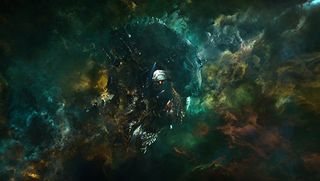
Take Knowhere, a renegade three-mile city carved out of a giant space skull. It was assembled from an astonishing 1.2 billion polygons, making up around 250 different models of buildings, pipes, railings, and lights.
These were not just cookie-cutter elements either, McCulloch reveals. Framestore designed different neighbourhoods with different colours and different types of houses, each with a backstory and enough complexity to make them seem real.
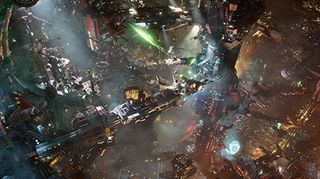
An unprecented amount of work, then - but for the VFX supervisor, it was a joy and a pleasure. "Marvel have an incredible group of production designers and art directors who work for them," he stresses. "So we had a wealth of concept and design work to start our work with."
Vibrant and colourful
As ever, Framestore saw it as their job to translate what was in the director's head to the big screen.
Get the Creative Bloq Newsletter
Daily design news, reviews, how-tos and more, as picked by the editors.
"James Gunn was heavily involved from the beginning through to the finish of all of our work," McCulloch explains. "He came to the project with strong ideas about the film he wanted to make, and really worked with us to realise that vision.
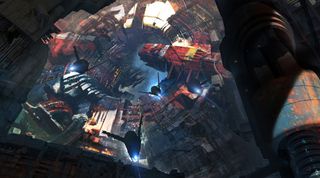
"It was important to James that this not be 'just another sci-fi movie'," McCulloch stresses. "He loved the aesthetic of the comic books, and wanted his world to be vibrant, colourful and graphic, just like the source material. With that in mind, we did our best to bring ideas to the table that meshed with what he was looking for."
And Framestore's role wasn't just a technical one, McCulloch notes. "In fact, Charlie Wood, the production designer, contracted our art department to help with the overall design work of the film. So our in-house team are responsible for much of the design of Knowhere, as well as bringing it to digital life."
Rodent challenge
If that wasn't enough work, Framestore also accepted one of the biggest VFX challenges you could imagine – to make Rocket, a CGI raccoon, into a believable character. And they didn't just have to make the irascible rodent walk on on two legs: they had to make him start bar fights, fire weapons, pilot spaceships and a whole lot more.
As the strongest and most central character that Framestore had ever animated, Rocket needed to look as photoreal and naturalistic as possible. So Framestore had to do things a little differently.
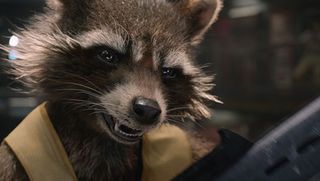
For example, normally a studio would simulate around 10 per cent of the hair in a coat of fur as guides to drive the full groom. "But Sylvain Degrotte, our head of CFX, proposed that we sim the entire groom to achieve a more naturalistic finished effect," McCulloch reveals.
"We ran as many tests as we could, and he was right – we all felt the full simulation was a better looking result."
Hair shading
The groom was split into three different sections – the head, the arms and tail, which meant the artists could easily remove parts of the fur which were not visible in shot.
Framestore rendered in Arnold and used a shader based on the disneyISHair model. For the markings they used multiple colour maps that were then mixed in different ways along the length of each hair.
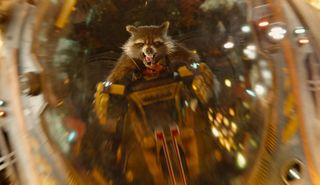
For the short fine hair they were able to achieve the speckled look of real raccoon fur along each strand by swapping between the different maps in certain areas controlled by mix masks. The longer hairs had fewer colour changes along the length, which combined to create a recognisable raccoon mask.
All this extra attention to detail really paid off, and watching the movie it's easy to forget you're watching a computer-generated character. McCulloch happily accepts the compliment. "Our creature effects team are some of the very best in the world," he says. "They have wide range of experience when it comes to creature work."
Heavy schedule
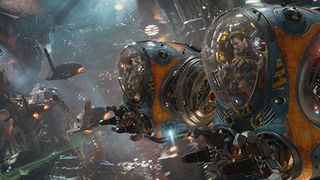
But going the extra mile means extra work, so did Framestore have to spend a lot longer on this movie than normal? "Actually, the opposite is true!" McCulloch says. "We had less time on this project than something with this kind of scope would normally demand. Marvel ran a tight schedule on this production, which meant we had to as well.
"I believe that the artists are the most valuable asset in a VFX production," he stresses, "and while we all work some late nights and long hours, it is vitally important that you not push them to unreasonable levels."
So how did they cope with the extra workload? "For us, part of that meant having a bigger crew – more artists to spread the work between," McCullouch explains. "We also expanded our render farm to get renders through quickly.
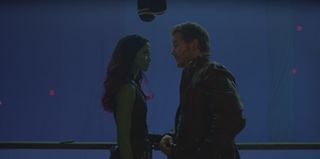
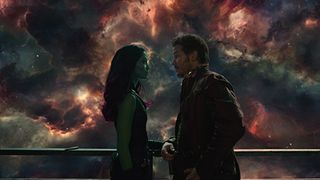
"In the end it was a tough show for our crew – especially the comp team. But we did everything possible to manage the project, not push our people unreasonably, and create a fun environment to work in, where people know they're valued."
That sense of fun certainly shines through to the finished product, making Guardians one of the best marriages between digital effects and comic sci-fi we've seen to date. We can't wait for the sequel!

Thank you for reading 5 articles this month* Join now for unlimited access
Enjoy your first month for just £1 / $1 / €1
*Read 5 free articles per month without a subscription

Join now for unlimited access
Try first month for just £1 / $1 / €1

Tom May is an award-winning journalist and editor specialising in design, photography and technology. Author of the Amazon #1 bestseller Great TED Talks: Creativity, published by Pavilion Books, Tom was previously editor of Professional Photography magazine, associate editor at Creative Bloq, and deputy editor at net magazine. Today, he is a regular contributor to Creative Bloq and its sister sites Digital Camera World, T3.com and Tech Radar. He also writes for Creative Boom and works on content marketing projects.